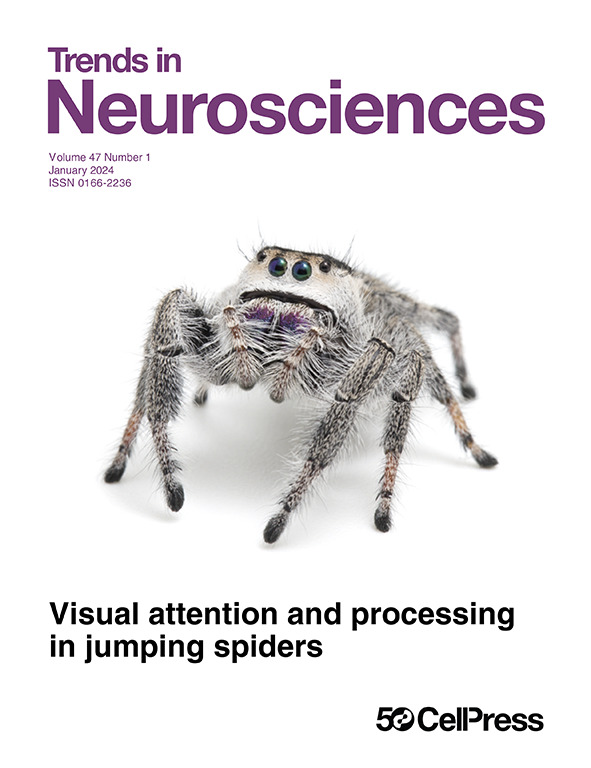Gi信号控制小胶质细胞监视和神经元同步。
IF 15.1
1区 医学
Q1 NEUROSCIENCES
引用次数: 0
摘要
小胶质细胞与神经元之间的相互作用对于维持大脑稳态至关重要。在最近的一项研究中,Zhao和他的同事证明了小胶质细胞上gi - g蛋白偶联受体(gi - gpcr)的激活会抑制小胶质细胞过程动力学,降低神经元活性,并破坏网络同步。这些发现强调了小胶质细胞Gi-GPCR信号在神经调节中的作用及其在健康大脑网络活动中的作用。本文章由计算机程序翻译,如有差异,请以英文原文为准。
Gi signaling controls microglial surveillance and neuronal synchronization.
Microglia-neuron interactions are essential for maintaining brain homeostasis. In a recent study, Zhao and colleagues demonstrated that activation of Gi-G-protein-coupled receptors (Gi-GPCRs) on microglia suppresses microglial process dynamics, reduces neuronal activity, and disrupts network synchronization. These findings highlight the role of microglial Gi-GPCR signaling in neuromodulation and its role in network activity in the healthy brain.
求助全文
通过发布文献求助,成功后即可免费获取论文全文。
去求助
来源期刊

Trends in Neurosciences
医学-神经科学
CiteScore
26.50
自引率
1.30%
发文量
123
审稿时长
6-12 weeks
期刊介绍:
For over four decades, Trends in Neurosciences (TINS) has been a prominent source of inspiring reviews and commentaries across all disciplines of neuroscience. TINS is a monthly, peer-reviewed journal, and its articles are curated by the Editor and authored by leading researchers in their respective fields. The journal communicates exciting advances in brain research, serves as a voice for the global neuroscience community, and highlights the contribution of neuroscientific research to medicine and society.
 求助内容:
求助内容: 应助结果提醒方式:
应助结果提醒方式:


